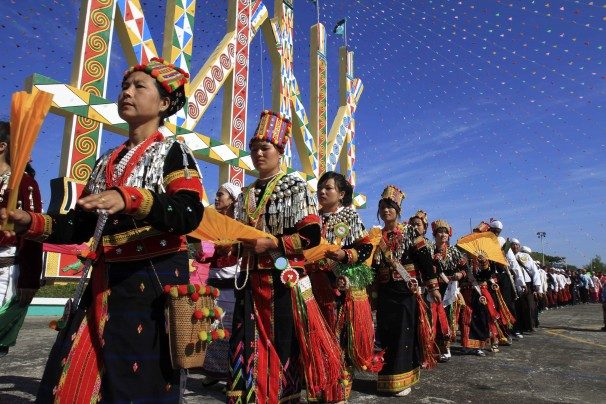This column was published in The Myanmar Times on Monday, 11 January 2016
Sunday 10 January, was Kachin State Day. During the long years of ceasefire between the Kachin Independence Army (KIA) and central government forces, it came to mark a week of cultural and political exuberance.
In the final decade of that ceasefire, from 2001 to 2011, the Kachin State Day Manaw Festival was held on a grand scale to showcase local traditions of dance, food and song.
Tens of thousands of people would flock to the Manaw ground in the northern suburbs of Myitkyina for the celebrations. These spectacular festivals were made possible by the cooperation of the Myanmar military government, Kachin political and armed groups, local cultural and religious leaders, and the Kachin State’s tycoon class.
These tycoons made their fortunes in jade, trade and construction, and looked to the annual Kachin State Day Manaw as a way of giving back to society.
The long line of these festive occasions came to an end in June 2011 when the ceasefire broke down, signalling the rapid re-escalation of a war that many had hoped was over for good.
Since then activity at the Manaw ground has been subdued. In 2015 a poorly attended festival, organised by government allies, was punctuated by the attendance of President U Thein Sein.
Decked out in traditional Kachin clothes, he played the role of festival patron. U Thein Sein will long be remembered across the state as the president who halted the construction of the hugely contentious Myitsone hydroelectricity dam project. Many locals give him credit for that bold and unexpected move.
But they will also remember him as a key figure in the new war, as somebody who was prepared to once again unleash the might of the Tatmadaw against the KIA. Many will never forgive him for that and resented his presence at what was once a cherished cultural event.
This history counts for a great deal because the next time a Myanmar president attends a Manaw festival it is likely, based on the numbers in Naypyitaw, that he or she will be from the National League for Democracy.
At the November election the NLD did well almost everywhere and also chalked up a triumph in Kachin State, claiming 48 of 70 seats at the national and local levels.
The only other parties that picked up significant numbers were the Union Solidarity and Development Party, with 10, and the Lisu National Development Party and the Kachin State Democracy Party, which each won four.
Supporters of the Kachin State Democracy Party, founded by prominent Kachin nationalist figure U Manam Tu Ja, will be disappointed that they only managed a single Pyithu Hluttaw seat and three seats in the Kachin State Hluttaw.
Even harsher was the verdict on the Unity and Democracy Party of Kachin State, spearheaded by Naypyitaw mover-and-shaker U Hkyet Hting Nan, which was reduced to one state legislature seat.
What these results mean is that the NLD will dominate the Kachin State Hluttaw, and claim the majority among the elected Kachin delegation heading to Naypyitaw at the end of this month.
Importantly, the election results come at a time when, due to large-scale internal migration, the proportion of ethnic Kachin in Kachin State might be at the lowest level in recent history. The diversity of local voters probably helped the NLD in the exacting first-past-the-post system.
Such demographic and economic trends are watched warily from Laiza, where the KIA high command will be looking to find grounds for compromise with the new government in Naypyitaw.
They hope, of course, that Daw Aung San Suu Kyi’s team will put in the hard work to understand the main Kachin armed group’s plans for the future. But the KIA, whatever its military strength, does not have a popular mandate in 2016.
They will have recognised that across the country most ethnic nationalists performed poorly at last year’s poll. How this translates into further peace negotiations is difficult to predict.
It also matters that, in the Kachin case, the NLD’s success was far-ranging. From Putao to Mansi, the democrats now carry the hopes of people too familiar with the hardships of conflict and the frustration of long-term ceasefire. The NLD even won the four ethnic affairs ministerial positions for the state’s Bamar, Shan, Lisu and Rawang communities.
If peace talks go well then perhaps 2017 or 2018 will be the year for another grand Kachin State Day Manaw Festival. We should not forget that the revival of the Manaw under the old ceasefire was made possible by an auspicious commercial, political and cultural confluence.
That is what the NLD now needs to generate. If Daw Aung San Suu Kyi is to get a warm reception at the next Manaw then she will want to give the people of Kachin State something meaningful to dance for.
Nicholas Farrelly is the Director of the Myanmar Research Centre at the Australian National University and co-founder of New Mandala.
 Facebook
Facebook  Twitter
Twitter  Soundcloud
Soundcloud  Youtube
Youtube  Rss
Rss 